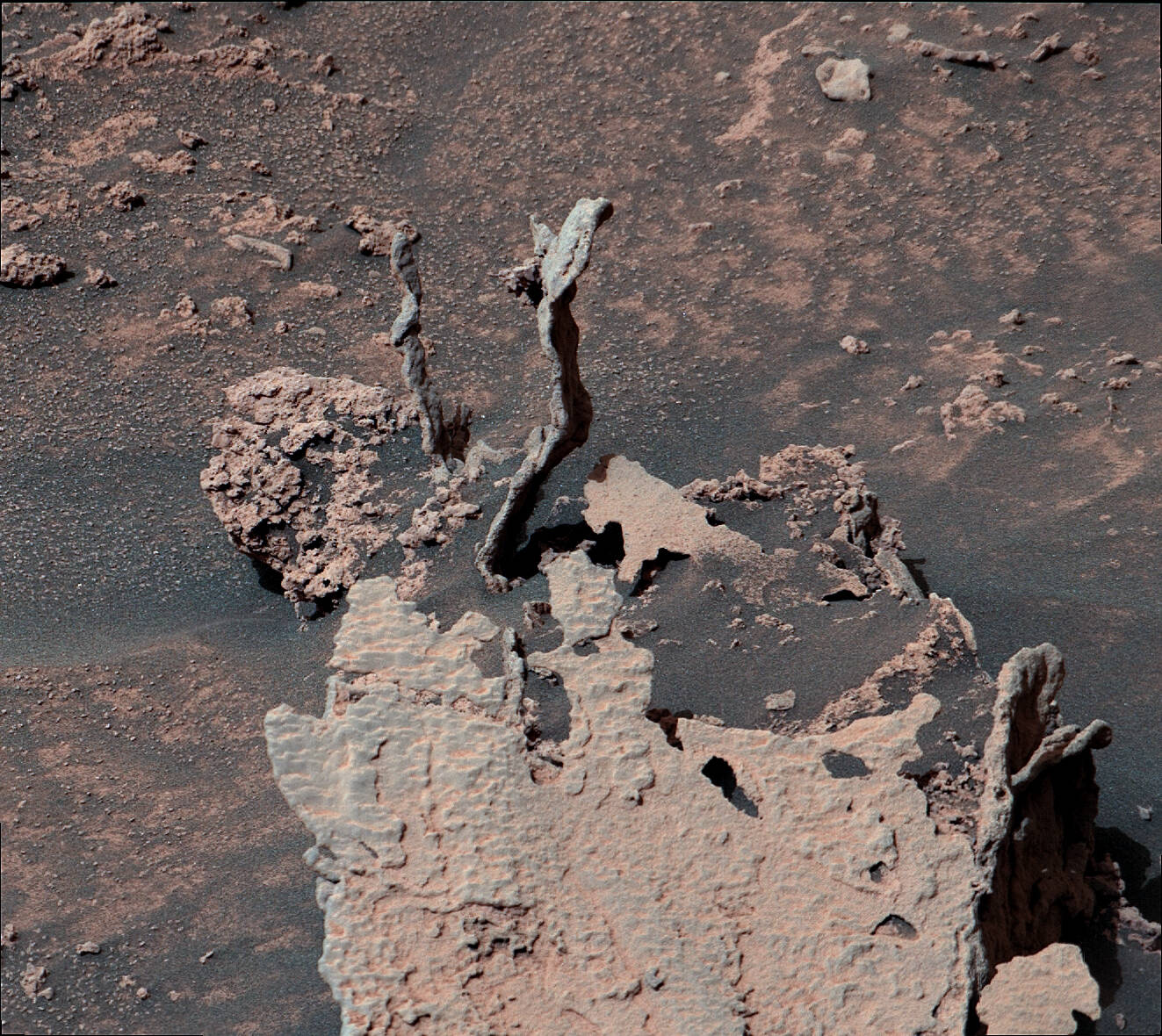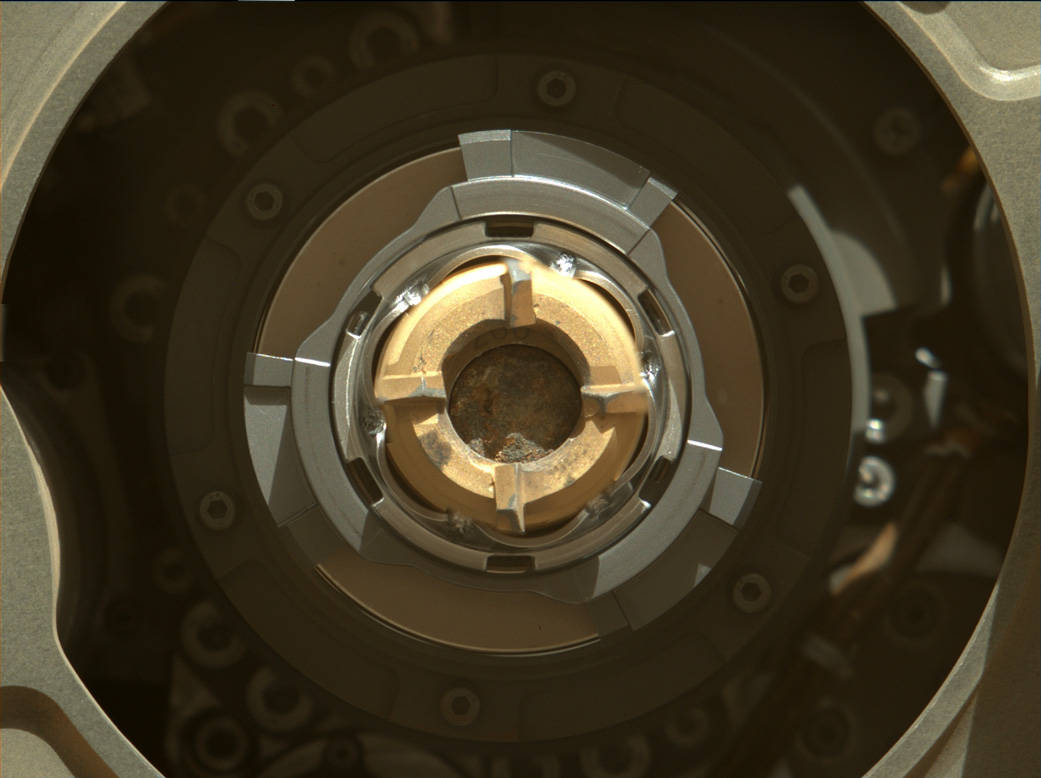Can humans live on Mars? This is how NASA is preparing to reach the planet in the coming decades.

Mars is the only planet we know of that is currently inhabited entirely by robots. The Red Planet, located at an average distance of 228 million kilometers (1.5 astronomical units) from the Sun, is currently being explored by two NASA rovers and one from the China National Space Administration (CNSA), and is orbited by three U.S. space agency spacecraft. These teams serve as explorers to pave the way for astronauts who eventually reach its surface .
And despite being a dry, rocky and very cold place, Mars, the fourth planet from the Sun, is one of the two closest planetary neighbors to Earth (Venus is the other), remains the target on the horizon of human exploration for international space agencies like NASA because it is one of the only places in the solar system that we know of where life may have existed .
This makes it a destination rich in scientific discovery and a driving force for technologies that will allow humans to travel and explore far from Earth. According to NASA, "What we learn about the Red Planet will tell us more about Earth's past and future, and may help answer the question of whether life exists beyond our planet."
In search of traces of life Currently, five NASA missions are underway to Mars. The oldest of these is Mars Odyssey , which reached the Red Planet on October 24, 2001. It was the first spacecraft to create a global map of the chemical elements and minerals that make up the Martian surface.

Some of the photos released by Odyssey. Photo: NASA: Mars Odyssey spacecraft
According to NASA, the spacecraft also holds the record for the longest mission in orbit around a planet other than Earth. The mission carries three scientific instruments to gather information on Martian geology, atmosphere, environmental conditions, and potential biosignatures.
Odyssey successfully completed its primary science mission from February 2002 to August 2004. Today, it continues to study clouds, fog, and frost, and to map surface rocks to make future landings on Mars safer, as the orbiter continues to complete more than 100,000 orbits around the Red Planet.
Odyssey's scientific achievements include mapping the distribution of hydrogen, which led scientists to discover large amounts of water ice buried just beneath the surface of the polar regions . It has also mapped the radiation environment in low Mars orbit to determine the risks to future human explorers who might go to Mars.
On March 10, 2006, the Mars Reconnaissance Orbiter (MRO) mission joined Odyssey on Mars. This initiative aims to search for evidence that water persisted on the surface of Mars for an extended period of time . Although other missions to Mars have shown that water existed on the surface throughout its history, it remains a mystery whether water ever existed long enough to create a habitat for life.
MRO instruments perform extreme close-ups of the Martian surface, analyze minerals, search for subsurface water, determine the amount of dust and water distributed in the atmosphere, and monitor the global climate daily. These studies identify mineral deposits that may have formed in water over long periods of time, search for traces of the shorelines of ancient seas and lakes, and analyze deposits laid down in layers over time by water currents.
The mission is studying whether the Martian subsurface ice discovered by Odyssey is the top layer of a deep ice reservoir or a shallow layer in equilibrium with the atmosphere and its seasonal water vapor cycle.
Another ongoing mission is the Mars Atmosphere and Volatile Evolution (Maven) mission , which arrived at the Red Planet on September 22, 2014, and is the first dedicated to understanding the Martian upper atmosphere.
Maven data is expected to determine how much of the Martian atmosphere has been lost over time by measuring the current rate of escape into space and gathering enough information about relevant processes to allow calculations going back in time. In this way, understanding atmospheric loss allows scientists to understand the history of Mars' atmosphere and climate, liquid water, and the planet's habitability.
On August 6, 2012, the Curiosity rover arrived on Mars as part of NASA's Mars Science Laboratory mission. At the time of its launch (November 26, 2011), Curiosity was the largest and most capable rover ever sent to Mars at the time, aiming to answer the question: Were there ever environmental conditions on Mars suitable for supporting tiny life forms called microbes?

NASA's Curiosity Mars rover detected these finger-like rocks with its Mast Camera. Photo: NASA/JPL-Caltech/MSSS
Early in its mission, Curiosity's scientific tools found chemical and mineral clues to past habitable environments on Mars. Now it continues to explore the rocky record of a time when Mars could have supported microbial life. Determining Mars' past habitability allows NASA and the scientific community to better understand whether life may have existed on the Red Planet and, if so, to better understand where to look for it in the future.
The Mars 2020 Perseverance rover arrived at Mars on February 18, 2021, to search for signs of ancient microbial life to advance the exploration of Mars' past habitability. The rover is collecting core samples of Martian rock and regolith (broken rock and soil) for possible collection by a future mission that would return them to Earth for detailed study.
To accomplish this task, NASA chose Jezero Crater as the landing site for the Perseverance rover because scientists believe the area was once flooded with water and hosted an ancient river delta. Furthermore, the rover is studying the evolution of Mars' climate, surface, and interior, and is testing technologies for future human exploration.

The Perseverance rover. Photo: iStock
Among the things we know about Mars today are, for example, that it's a planet that completes its rotation around the Sun every 24.6 hours, which is very similar to a day on Earth (23.9 hours). "Martian days are called sols, short for 'solar day.' A year on Mars lasts 669.6 sols, which is equivalent to 687 Earth days," NASA reports.
We also know that the Red Planet is actually multi-colored. On the surface, colors like brown and gold are visible. “The reddish appearance of Mars is due to the oxidation of iron present in rocks, regolith (Martian soil), and dust. This dust is expelled into the atmosphere and, from a distance, makes the planet appear mostly red,” explains the US space agency.
Mars is also home to the largest volcano in the solar system, Olympus Mons. It's three times taller than Earth's Everest and has a base the size of New Mexico. And it appears to have had a watery past, with ancient networks of river valleys, deltas, and lake beds, as well as rocks and minerals on the surface that could only have formed in liquid water. Some features suggest that this planet experienced massive floods around 3.5 billion years ago.
“ There is currently water on Mars, but the Martian atmosphere is too thin for liquid water to exist for long on the surface . Water is found in the form of ice just below the surface in the polar regions, as well as in brackish water that seasonally flows down some crater slopes and walls,” NASA details.
To continue learning about this planet, and paving the way for humans to eventually reach it, the US space agency, together with the European Space Agency (ESA), plans to launch an ambitious multi-mission campaign they have called Mars Sample Return (MSR) to bring carefully selected samples back to Earth for the first time .

Perseverance rock fragment Photo: NASA/JPL-Caltech/ASU/MSSS
"The returned samples would revolutionize our understanding of Mars and our solar system and prepare for the arrival of human explorers to the Red Planet," NASA explains. The agency estimates that these samples will arrive on Earth during the 2030s in one of the most complex missions undertaken by the space agency, with an estimated cost of between $8 billion and $11 billion.
"Safely landing and collecting the samples, launching a rocket with the samples from another planet (which has never been done before), and safely transporting the samples more than 33 million miles back to Earth is no small task," then-NASA Administrator Bill Nelson said in 2024.
Getting to Mars All of these missions share the goal of helping humanity eventually set foot on Martian soil. Additionally, engineers and scientists across the country are working to develop the technologies astronauts will use to one day live and work on Mars and return safely to Earth. But to achieve this, humans must first complete an 850-day journey to the Red Planet.
Among the fields they're currently working on is, for example, the production of oxygen from the Martian atmosphere for fuel combustion and breathing, with projects like the Mars Oxygen In-Situ Resource Utilization Experiment (Moxie) . The size of a car battery, it functions like a tree that sucks in carbon dioxide and exhales oxygen to meet the crew's breathing needs and serve as oxidizing fuel for an ascent vehicle.
Another crucial issue will be food production. To this end, NASA is researching food systems that guarantee quality, variety, and nutritional value on these long missions. Additionally, plant growth on the International Space Station also contributes to crop management in space.
eltiempo




